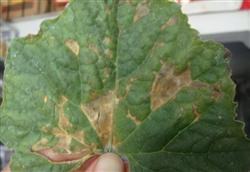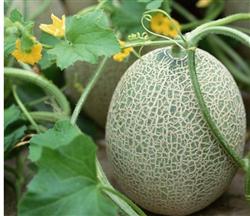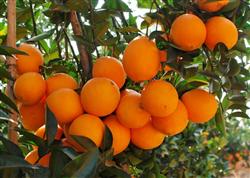How to Control Brown spot in Hami Melon planting

How to control brown spot in cantaloupe planting? Please introduce the method that brown spot is a common disease of Hami melon, which is widely distributed, sporadic, mild and has no effect on production. In severe cases, the rate of diseased plants can reach more than 80%, making some leaves infected and necrotic, affecting the yield and quality to a certain extent. Symptoms of this disease mostly occurred in the middle and late growth of Hami melon, only infecting leaves. Brown dots were produced on the leaves at the initial stage, and then developed into near-round to amorphous brown necrotic spots, with large differences in size, obvious edges of the lesions, and often with yellowish green to light yellow halos. Generally, the mildew layer on the disease spot is not seen, and the dark gray mold layer is produced only under the condition of continuous rain or high humidity, that is, the pathogen conidiophores and conidia. Pathogen CercosporacitrullinaCke. Cercospora melonensis is called Cercospora melonensis, which belongs to the subphylum fungus. The conidia of the pathogen are fascicled, brown, straight or curved, without geniculate nodes, unbranched, with 0-4 septum, flat-cut at the top and obvious spore marks, with a size of 27.5-90 μ m × 4.3-5 μ m. Conidia colorless, needle-shaped or whip-shaped, straight or curved, with 4-21 septum, 22.5-175 μ m × 2.8-5 μ m. The pathogen overwintered in the soil with conidia or mycelium, and the pathogen could overwinter with chlamydospore and sclerotia. When the conditions are suitable, the conidia are transmitted by airflow or Rain Water spatter for primary infection, and new conidia are formed after the disease for repeated infection. Warmth and high humidity are beneficial to the disease. When the onset temperature is 20-30 ℃, the relative humidity is more than 90%, the temperature is 25-27 ℃ and the humidity is saturated, the disease occurs seriously. In the middle and later stage of growth, high temperature and humidity, or more overcast and rainy days, or stuffy shed for a long time, and large temperature difference between day and night are all beneficial to the disease. Prevention and control methods (1) agricultural control. In ① seriously diseased plots, rotation with non-melons and legumes for more than 2-3 years was carried out to control the disease. ② should strengthen cultivation management, pay attention to ventilation, scientific fertilization, timely irrigation, cultivate strong seedlings, pull out diseased plants in time, thoroughly remove disease residues after harvest, and reduce the source of bacteria in the field. (2) Pesticide control. Drug control was carried out in the early stage of the disease. You can choose 50% dimethrin wettable powder 500x liquid, or 50% Nongliling wettable powder 1000 times liquid, or 40% Fuxing EC 8000 times liquid, or 6% Le Bigeng wettable powder 1500 times liquid, or 70% methyl topiramate wettable powder 600x liquid spray, or 80% Dasheng wettable powder 600x liquid spray. 6.5% carbendazim powder 15kg/hm2 was selected for prevention and control in the protected area. Commonly used agents dimethrin, Nongliling, Fuxing, Le Bigeng, methyl thiophanate, Dasheng, carbendazim. Click to get more cantaloupe planting techniques click to get more fruit planting techniques
- Prev

Where is it suitable to grow cantaloupe and how to plant it?
Where is it suitable to grow cantaloupe and how to plant it? Please introduce and guide the cantaloupe varieties introduced to the northwest in southeastern China. Because they can not adapt to the climatic conditions of small temperature difference, high humidity and insufficient light, they often show poor disease resistance, low sugar content, easy to crack on the surface of melon and so on.
- Next

How to grow navel oranges with high yield?
How to grow navel oranges with high yield? Please give a detailed description of the planting methods for navel oranges can refer to the following methods: 1. Build a garden with a high standard. To build a garden on a hillside, we should first build a contour anti-slope terrace, and then open a trench to apply basic fertilizers such as straw, pig and cow manure, phosphate fertilizer and lime, requiring each tree to plant the base under the hole.
Related
- Moge, come on! The staff of the peasant association in the producing area of cantaloupe were frightened when the crowd gathered.
- Causes and Solutions of low Fruit setting rate of Apple
- Symptoms and control measures of passion fruit virus disease
- Fruit growing lesson: how do apple orchards keep high yields?
- Can you build orchards in the mountains? What are the pros and cons?
- How to manage the coloring period of Crisson grape?
- This paper introduces the processing technology of two kinds of fig products.
- How much is a month for retired teachers in rural areas by 2020?
- How can strawberry planting increase sugar content? We should pay attention to management in many aspects.
- What are the cultivation techniques on how to improve the yield of golden fruit?

